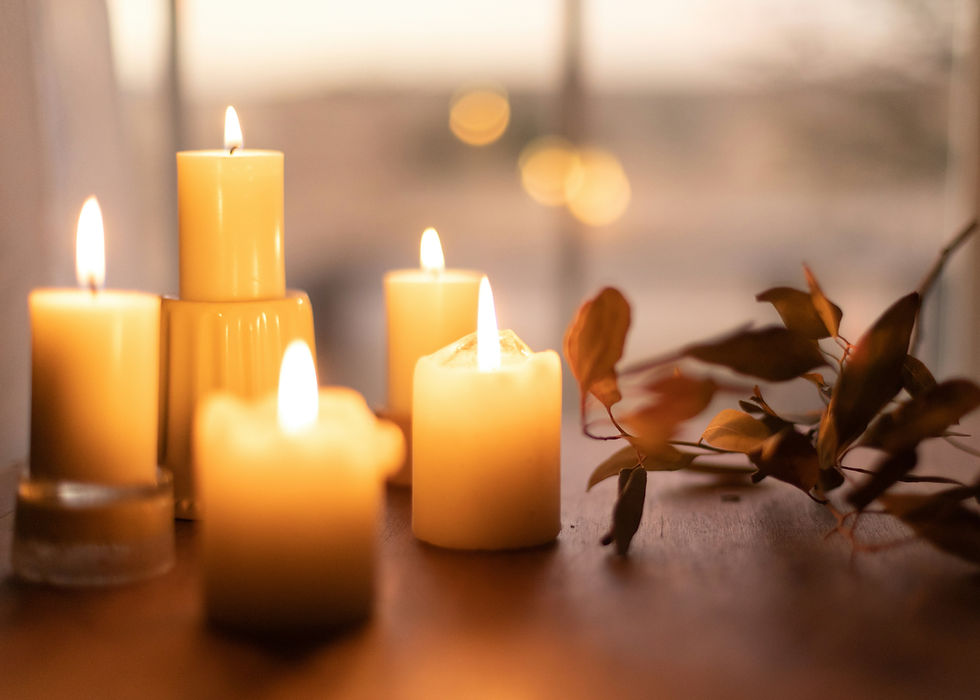Forget about your Parenting Triggers and Do This instead
- Lori K Walters
- Jul 8, 2024
- 5 min read

For all of us who deeply feel the overwhelm and angst of parenting teens and young adults, the worry of what’s going to happen to them out in the big world and the fear of screwing them up, our triggers are evident almost every day.
Here we go again, your heart racing when your teen walks in, your tongue already getting tangled, your brain going blank, gut churning, shoulders caving... and all you want to do is run away. Or maybe scream and kick something real hard.
Being able to recognize your reactivity is very beneficial, essential really.
Think of how you’re experiencing the divisive pattern that’s playing out these days with your big kid. Are you usually thrown into flight, flight, freeze or fawn? Do you feel anger, desperation, disappointment, bitterness, rejection or hopelessness? Is the tension in your neck, belly, eyes or chest?
This is one of the capabilities I support my clients to develop because, if you’re ever going to get out from under that pattern, you have to be able to recognize when you’re about to have your habitual reaction or when you’re having that reaction.
But focusing on our triggers is only part of the equation in shifting our way of parenting.
Equally important is being able to recognize when you’re feeling anchored, resourceful and calm.
What’s happening in your system then? How can you replicate it?
Deb Dana, renowned trauma expert and author of "The Polyvagal Theory in Therapy," calls these small moments “glimmers: when our biology is in a place of connection or regulation, which cues our nervous system to feel safe or calm”.
Being able to recognize these moments is also essential to developing your new way of being in those seemingly impossible situations with your kids. And it’s not something we tend to focus on, is it?
That’s because our brains are wired to pay attention to threats and negative stimuli. Triggers are actually a series of swift, automatic reactions, often associated with negative emotions or past traumas, that assemble the resources the body needs to manage a threatening circumstance, real or perceived. They get your attention and move you into action (flight or fright) or inaction (freeze or fawn).
But glimmers are more subtle. They don’t set off fire alarms. They are more like music notes or streams that shape your system in more gentle ways. And so, just like the unsqueaky wheel, our moments of grounding and connectedness can go unnoticed.
And therefore, unpropagated.
So, how do we become better attuned to notice our un-triggered states?
Recognizing Micro-Moments of Goodness
1 Start Right Here
Right now, you’re taking a few minutes to read this article. I’m assuming that you’re not experiencing "automatic reactions to protect you from threat”. So, what are you experiencing?
Take a moment...What's your experience right now? Do you feel grounded or restless, intrigued or indifferent, self-compassionate or self-critical, sourced or helpless, open or doubtful…
Choose one. For example, grounded or connected.
How do you recognize groundedness or connection in your body? Is it a calm belly, a juicy swirling in your pelvis, a perfectly still heart, a radiant solar plexus, a soft gaze, a supple spine, etc.? Where is 'grounded' or 'connected' living in you right now as you read? _________
What emotions arise with groundedness or connection? Acceptance, serenity, joy, playfulness, belonging, trust, curiosity, confidence, humility, gratitude, safety, delight… _________
What thoughts are happening? I’m ok. I’m right where I’m supposed to be. I’m supported… _________
Describe your connection to chi, god, nature or oneness. _________
Tuck your learning from this moment into your pocket. Add to it often.
2 Create Moments to Practice Awareness
Walk by the bakery and take in that fresh bread scent. Mmmm pure goodness.
Walk in the woods, cuddle your dog, sink your hands into the soil, throw rocks on the beach, sing that song, hug a friend, ride your bike, wrap yourself in a soft blanket, be very silly or pause to feel moonlight on your face. Notice the ‘goodness’ of the moment.
Notice how it feels inside you. How do your senses register goodness in these moments? How and where does your body hold or savor goodness? What is your heart connected to?
Set your intention to know your anchored states even better - your unique ways of being peaceful, grounded, empathetic and connected to all the goodness that is.
Then do more of that.
3 Take it Easy
If you’ve been with me for a while, you know about “low stakes” and “hot soup” practices. That is, when parents are getting to know their ingrained triggers, I have them work with them first in situations that are unlikely to evoke the trigger, like practicing at the gym before running a race. Then, when they’ve gathered capacity and confidence, they apply it in those tense situations with their kid, the hot soup.
I recommend the same for becoming familiar with your moments of grounding, connection and goodness: start outside of your interactions with your teen or young adult child.
There’s a good chance you’re already doing this in your weekly walks with your friend, your early morning mindfulness practice and your Sunday afternoons in your garden. So, a new practice might be bringing your attention to one moment. Each time you register your ‘glimmers’ of regulation and connection, you're creating better access to those states of being, like tramping down a path in the long grass.
Then how might you access those feelings when you're in a 'hot' moment with your kid? How could you plug into that place where 'grounded' lives in you? Is there a pose, image or phrase that might support your system? Pick one and try it. (And let me know if you would like some suggestions.)
4 Rest in the Great Heart
Life is good. In the challenges and heartbreaks, the knowns and unknowns, the ebbs and flows, it is inherently good.
The world shares its beauty with us all day, every day. Tiny buds open into big white blossoms. Blue eggs hatch brown chicks. And rain drops make tiny craters in the dirt. It's an ongoing flow of miracles and we get to live amongst it all.
And our hearts get to relate with others, our families, friends and colleagues. Sharing, learning from each other, being vulnerable and rising to new levels of connection and acceptance. Wider love, more goodness. Lean into that.
You are part of all this goodness. Not just because you work to contribute to a better world. Not just because you raise your children to be conscious and compassionate. You are part of all this goodness simply because you're here. You are part of the grounding and peace. Part of the love and interconnectedness, the Great Heart.
You ARE this goodness.
Deepen your knowing of that.
Subscribe to my newsletter and get my articles hot off the press (along with practices, meditations and more)
Photo by Fuu on Unsplash




